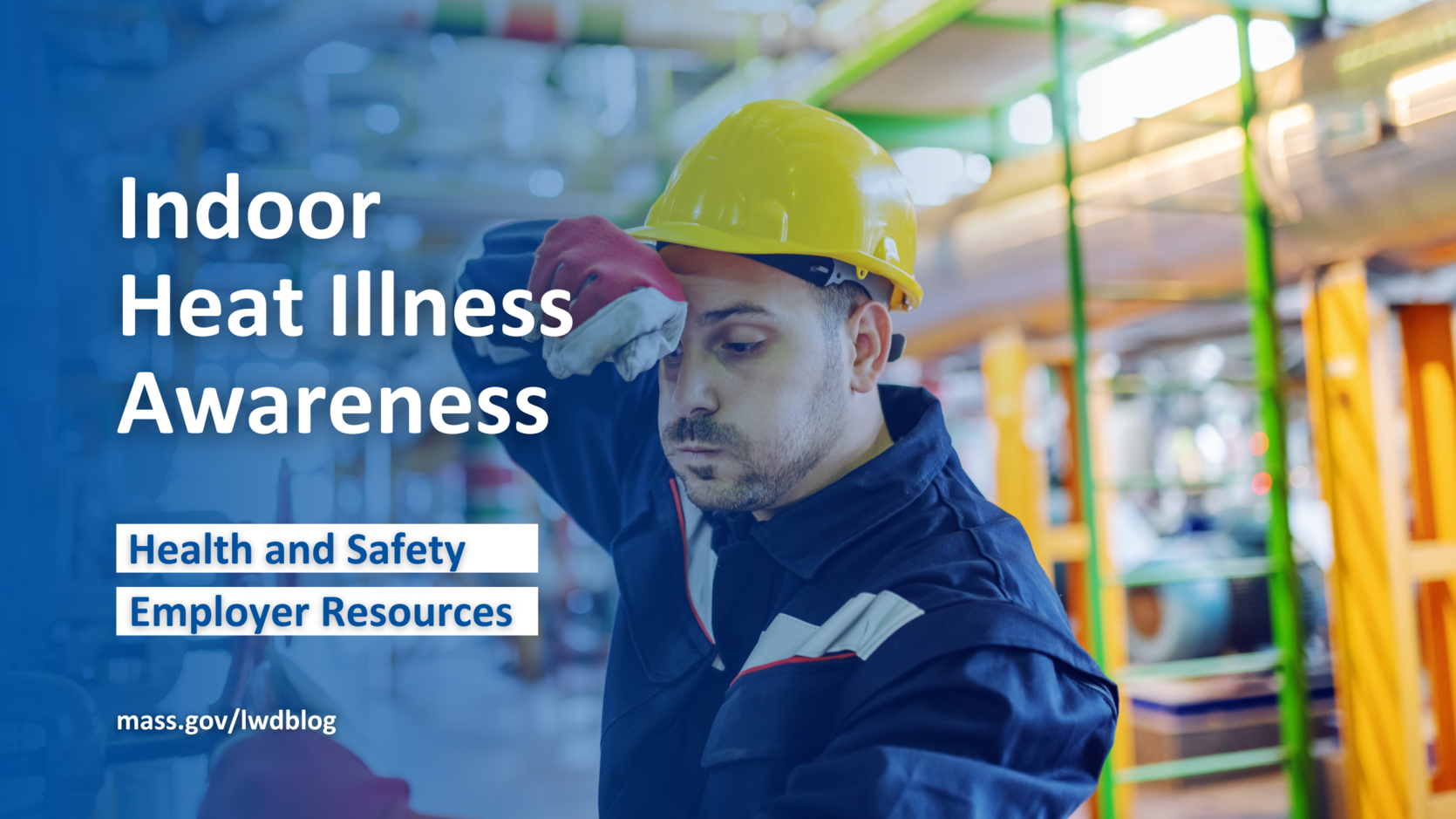- Executive Office of Labor and Workforce Development

Protect Outdoor Workers Exposed to Wildfire Smoke Polluted Air Flyer
Heat is a condition that affects all workplaces, whether indoors or out. Although much focus is placed on outdoor workers, especially in the summer sun (construction, landscaping, agriculture, etc.), it is important to note indoor workers (factories, warehouses, etc.) are susceptible to heat illness as well.
The Massachusetts Department of Labor Standards (DLS) encourages employers to plan ahead to protect workers from excessive heat. The first step is to identify heat hazards, including:
- High air temperatures (80 degrees or above)
- High level of humidity (60 percent or higher)
- Poor air movement
- Radiant heat sources (like ovens, furnaces)
- Physical labor
- Not enough cool drinking water
- Heavy personal protective equipment (PPE)
The Massachusetts Department of Labor Standards (DLS) encourages employers to plan ahead and protect workers from excessive heat. Analysis from the National Library of Medicine suggests over 70% of heat-related deaths occur during a worker’s first week on the job. That’s why it’s critical to plan a work schedule that allows workers to build their heat tolerance during the first week on the job or the first week of a heat wave.
Symptoms of heat exhaustion include: heavy sweating, weakness, headache, dizziness, nausea or dark urine. Earlier this year, we shared tips to remind employers and outdoor workers to be mindful and on the lookout for signs of heat illness. The same tips apply to indoor workers.
The DLS offers free on-site safety and health consultations to help businesses recognize and control potential safety and health hazards. The program is called OSHA On-Site Consultation Program. The consultation program is free, confidential, voluntary, and separate from OSHA enforcement. As employers prepare for their consultation, here are some strategies to ensure indoor workers safety:
Maintain Adequate Ventilation
Provide exhaust fans to remove heat from hot equipment, such as ovens, and laundry dryers. Use portable fans to increase air movement in the work area.
Hydration Stations
Provide access to cool, potable water in easily accessible areas. Encourage workers to drink water frequently to stay hydrated.
Encourage Dress Code Flexibility
Allow workers to wear lightweight, breathable clothing during hot weather. Consider relaxing dress codes to accommodate comfort.
Flexible Work Hours
Offer flexible work hours, when possible, to allow employees to start and end their workdays during cooler parts of the day.
Provide Break Areas
Create designated break areas with seating and shade. Encourage workers to take regular breaks in cooler environments.
Educate on Heat Safety and Promote Team Awareness
Train employees about the risks of heat-related illnesses, symptoms to watch for, and preventive measures they can take. Encourage team members to look out for each other. If someone appears to be struggling with the heat, they should be encouraged to take a break and hydrate.
Implement Work-Rest Cycles
If the work involves physical activity, implement a work-rest cycle. Allow workers to take regular breaks to rest and rehydrate.
Monitor Health Conditions
Encourage workers to monitor their own health and communicate any signs of heat-related illness to supervisors.
Regular Check-Ins for New Hires
Supervisors should regularly check in with workers, especially new workers and temps, to ensure they are taking water and rest breaks and do not have signs of heat illness.
Emergency Response Plan
Have a well-defined emergency response plan in case a worker experiences severe heat-related symptoms. This should include immediate medical attention and calling 9-1-1, if necessary.
Accommodate Vulnerable Workers
Be especially attentive to the needs of workers who are more vulnerable to heat, such as pregnant employees or those with preexisting medical conditions.
By implementing these measures, you can help ensure the safety and well-being of workers in warm indoor environments during hot weather conditions. Remember that proactive planning and communication are key to preventing heat-related illnesses and maintaining a productive work environment.
